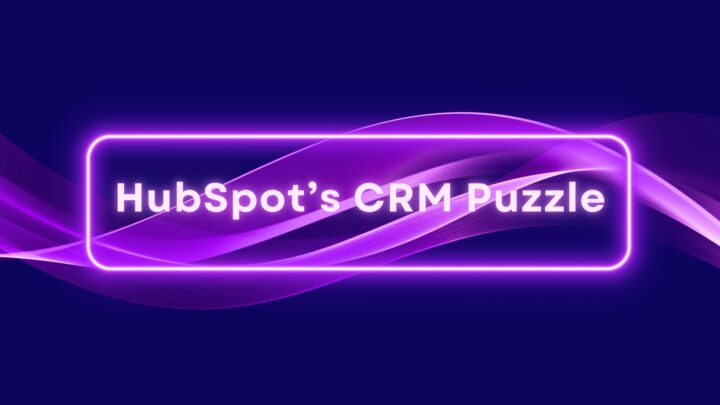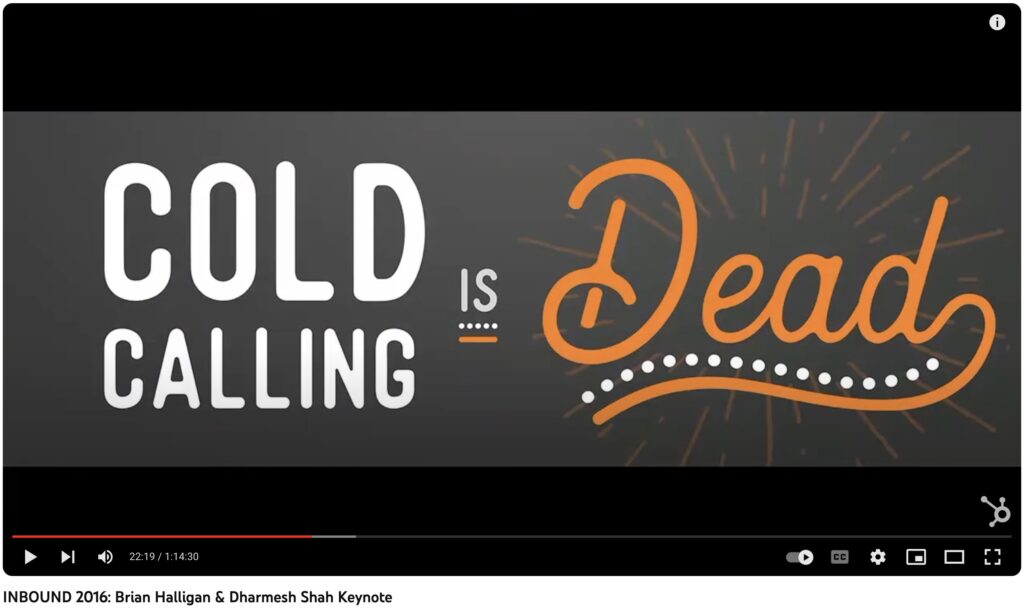
Imagine this (Scenario 1)
You’re a sales rep. You log into HubSpot and go to the Contacts view:
- You click a button in the top right labelled ‘Import New Leads’
- You are taken to a screen where you set a number of criteria, including job titles, seniority, location, company size, annual revenue, industry, etc
- You are shown a list of contacts to select from. Additional criteria is available including likelihood to engage, likelihood to unsubscribe, etc
- You sort by engagement likelihood and import the first 500 into your HubSpot portal as brand new contacts
- You then start batch enrolling them in a cold outreach sequence, part of which automatically sends a Connection request on LinkedIn
Imagine this (Scenario 2)
You’re a marketing executive. You log into HubSpot and go to your Lists:
- You choose a list of your contacts that you are planning to put into a campaign
- You click a button in the top right labelled ‘Enrich existing contacts’
- You are taken to a screen where you can select from a range of properties including job title, seniority, location, company size, etc
- You are also show a list of engagement properties including typical time to open, likelihood to unsubscribe, preferred email format to engage with, etc
- You click the button to enrich the contacts
- You also tick the checkbox that offers to automatically continue enriching contacts as new data becomes available
- You then add the contacts into your campaign activities including personalised emails, ad retargeting and smart content on your site
The Experience
I’m assuming the above experience is what HubSpot (and other CRMs) are aiming to provide.
Currently to achieve the above you need to combine a bunch of disparate activities, some manual, some semi-automated, such as:
- (Use a decent CRM to manage your contacts)
- Use a data aggregator/augmenter such as ZoomInfo, Apollo, NeverBounce, ClearBit, SalesIQ, Hunter, etc to source new contacts
- Use LinkedIn Sales Navigator to confirm details and add-ons to send automated connection requests
- Use previous activities to view engagement
It’s all a bit of a mess really, and the efficiency potential – if someone simplified this – is tantalising.
HubSpot alluded to most of the above in their various keynotes at INBOUND this year, including a ton of new sales tools, a deeper relationship with LinkedIn, and a use case for ChatSpot for finding leads (consider this just the start of what will roll out in future).
This is all on the back of their own company insights data enrichment (which has been around since the Sidekick days). You can assume HubSpot has acquired lots of little data players over the years and has likely made advances with the larger ones (eg I was half expecting to see Dharmesh appear as an investor on the Apollo company investor page).
Who Provides The Experience?
If the above flow is CRM providers building the data intelligence into the CRM, on the other side you’ve got the data aggregators building CRM functionality into their intelligence platforms.
Both racing to provide the same experience in the end.
The Blockers
There’s a ton of privacy, legislative (GDPR, CCPA), ethical, Chinese wall and business strategy issues to be considered with the above, but I’m conveniently ignoring those for now.
This article is just about the end goal, not how it will be achieved.
But worth noting that HubSpot has a nice way of protecting it’s main CRM product from any data privacy/ethical issues – by keeping it separate for now as part of ChatSpot and the unclear obfuscation of AI.
The Change
It’s amazing to see how far HubSpot has come over the last decade.
Just 8 years ago we had the CEO delivering a keynote stating that the cold outreach approach of cold calling was dead, and along with it cold impersonal email, ads and other ‘annoying’ activities.

HubSpot of course famously created a whole movement around it: Inbound Marketing.
How interesting that at the conference that bears that name – INBOUND – a key product message this year was in providing efficiency to engage in all those cold outreach activities.
A product built on the back of inbound marketing is now mostly sold by huge sales teams that engage in anything but.
This isn’t a criticism btw. Instead there’s a lesson here – how quickly we all need to adapt to the realities of the marketplace.
If anything, we should be impressed at how quickly HubSpot has embraced this realisation and course adjusted.
Aside: Perhaps the criticism, if there is any, should be directed at companies and agencies who have stuck their heads in the sand and still think being purely inbound marketing based ends well…
The Future
The short term future for sales processes, continues to be:
- efficiency of getting valuable contact data into CRMs, and
- efficiency of ‘engaging’ (ie harassing) those contacts.
I say short term because longer term there’s going to increased legislation rolling out that protects people from the intrusion. Consider the ‘do not call‘ lists an initial concept, and the spam laws an early attempt to face the issue.
Bizarrely, it’s still legal to send one-to-one cold outreach sales emails (even if they are mass batched), which seems like a loophole that’s sure to be closed in the future.
Kind of strange that HubSpot is so aggressive protecting it’s email deliverability for marketing emails (eg they’ll suspend accounts for sending legitimate emails that have a high unsubscribe rate), but on the other hand equally aggressive promoting sending sales emails, limited only by the underlying email providers limits (whilst making unsubscribe links optional).
Which means the real item of interest will be what sales looks like 10 years from now.
Will teams look back on these years as the golden age of sales – buoyed by unfettered sales harassment processes – and lament the loss of such a scalable, cheap and effective way to reach people?
Or will it have come full circle, and the INBOUND keynote of 2016 rings true once again. Perhaps we’ll end up back at Inbound Marketing after all.
Disclaimer: I use (and love) HubSpot in all my companies, including one that is focussed on implementing the product. I also co-host a HubSpot focussed podcast and YouTube show, and own HubSpot shares. I am anything but impartial.